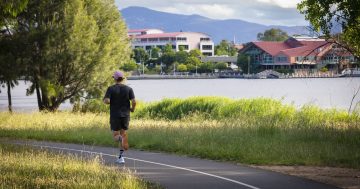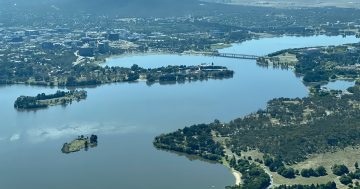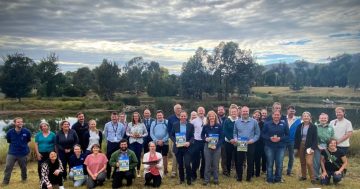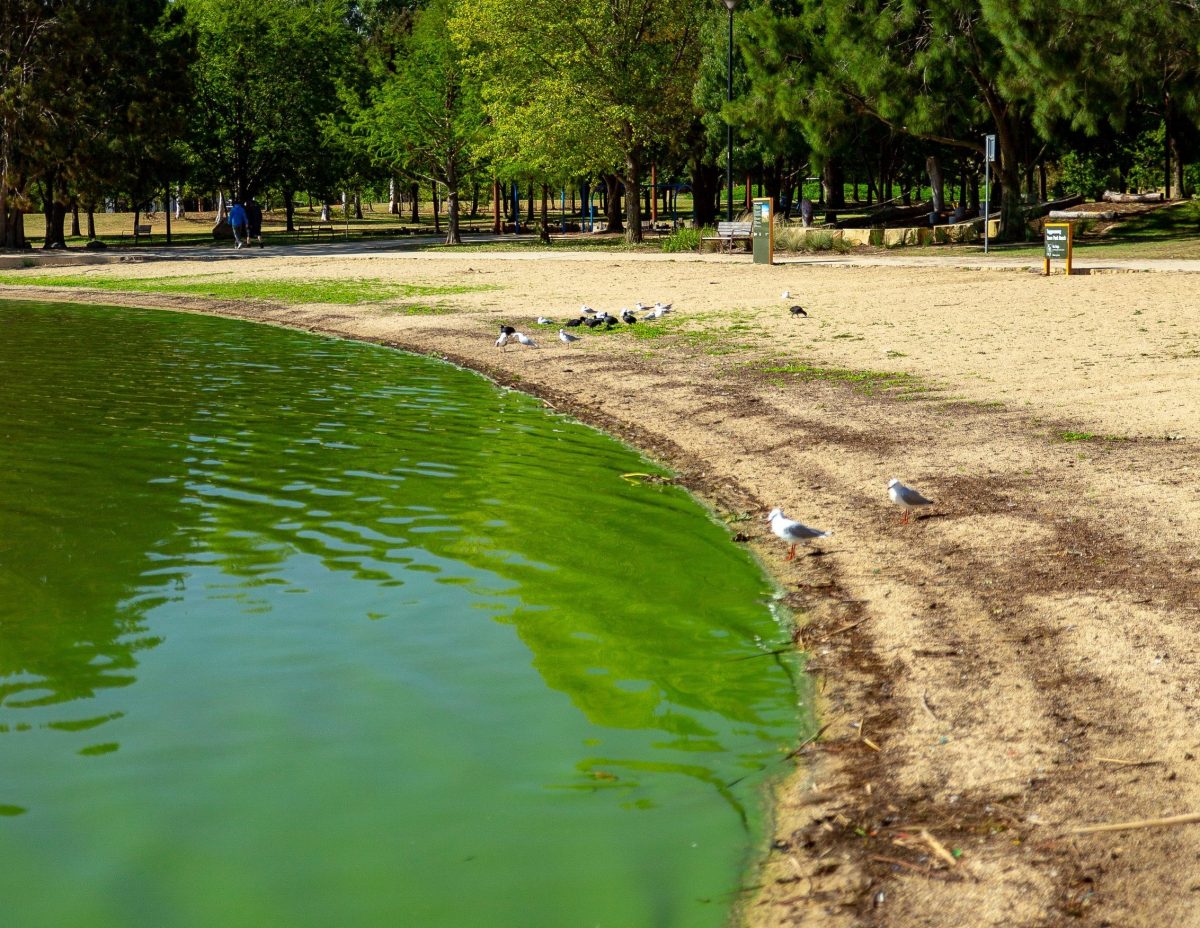
Algal blooms make Lake Tuggeranong unusable in the warmer months and local residents have oft bemoaned their existence. Photo: File.
The Canberra Liberals have sounded the alarm bells over the latest water quality data which shows Lake Tuggeranong’s health is going backwards despite millions of dollars worth of government intervention.
But one water quality expert said it’s possibly too soon to do so, especially given all the wet weather experienced recently.
Last year’s ACT Waterwatch Catchment Health Indicator Project (CHIP) annual report found that Lake Tuggeranong had its lowest water-health rating to date – it earned a D-minus.
That report, based on more than 1700 water quality surveys conducted by volunteers, found the lake had the worst phosphorus levels of all the lakes in the Territory.
“A combination of degraded assessments has earned this water body its worst CHIP score yet recorded,” it said.
“High inflows from above average rain washed in pollutants from the surrounding suburbs.”
It also found blue-green algal blooms were appearing in the warmer months, despite the installation of mobile wetlands intended to specifically address that problem.

Opposition spokesperson for water Nicole Lawder says the government isn’t serious about fixing water quality issues at Lake Tuggeranong. Photo: Region Media.
Opposition spokesperson for water Nicole Lawder said the results of the CHIP report were proof the ACT Government had continually failed to address problems in the lake, despite it having literally plunged millions into improving it.
Most recently, the ACT Government in April poured an additional $1.5 million towards addressing ongoing algal issues at Lake Tuggeranong by reducing the amount of leaf litter and rubbish making its way down the region’s networks of stormwater channels.
“[These latest results clearly show] that the Labor-Greens Government are only interested in appearing as though they are improving water quality in our lakes and waterways, rather than actually delivering results,” Ms Lawder said.
“The report’s findings for Lake Tuggeranong were a stark reminder of how bad the water quality issues in the ACT are. This government fails to engage in proper debate about how things can be improved, and Lake Tuggeranong is paying the price.”
Water quality expert at the University of Canberra Dr Rod Ubrihien said the issues with water quality at Lake Tuggeranong are complex and longstanding and it was important not to jump to conclusions – especially after such a wet year.
Dr Ubrihien, who studies algal blooms in the lake, said it’s important to take into account the impact high levels of rainfall have on the amount of nutrients and contaminants flowing into the lake.
“Lots of contaminants will have come through the system and the urban catchments,” he said.
“So when you’ve got a year like we had in 2021 with above average rainfall, that’s probably likely to have a direct impact on your water quality and something you’ll see in the short term results – as we did.
“It’s important to think about how we can interpret data in a wet year … and I don’t think we can take the leap yet and call this a trend – maybe after three or four years of this we could.”
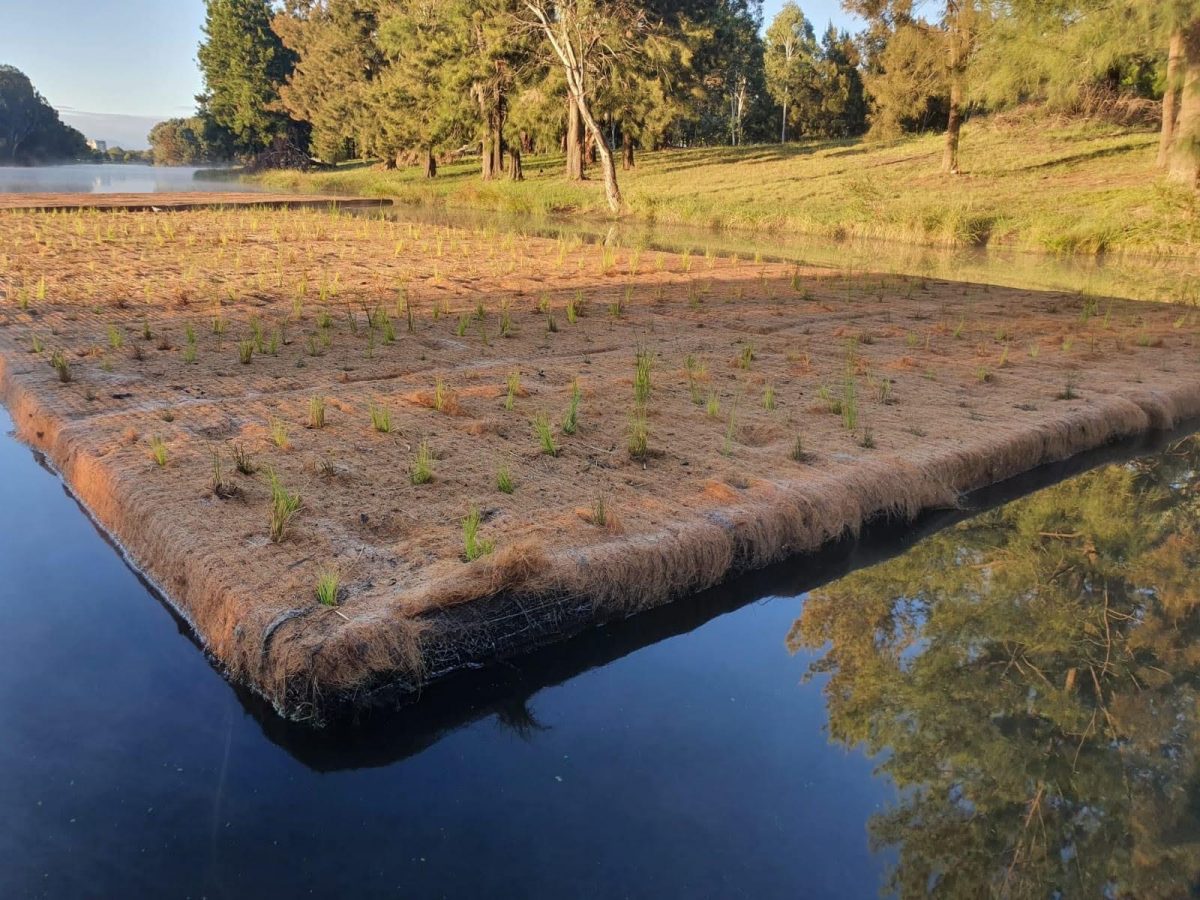
Floating wetlands were installed in Lake Tuggeranong in an attempt to alleviate recurring algae issues. Photo: ACT Government.
Dr Ubrihien said that fixing the longstanding problems of the lake would take a long time and lots of research.
He did note he had a somewhat vested interest in ensuring the research currently underway continued.
“A lake and a catchment is a super complex system,” he said.
“When you’ve got a lake in an urban catchment and you continue to put high concentrations of urban run-off into the lake you will affect its quality.
“The key purpose of the lake was to intercept those contaminants before they hit the Murrumbidgee, so in a way, the lake is doing its job – even though lots of residents don’t want to see it that way.”












